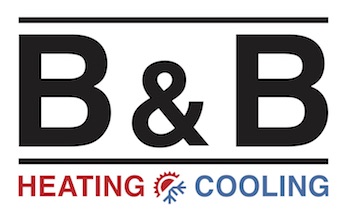
A furnace is often a background player at home, ensuring you're warm in the cold winter months. It often doesn’t get noticed until a malfunction appears.
One source may be that your furnace has a cracked heat exchanger. It can be a safety risk, so it’s critical to familiarize yourself with the evidence of a cracked heat exchanger and what to do if you believe that might be the problem.
What Is a Heat Exchanger in a Furnace?
A heat exchanger transfers heat from the combustion chamber inside your furnace to the air that flows through the ventilation. It generally accomplishes this using coils or tubes that heat up the air while functioning as a barrier to keep byproducts produced in the combustion chamber, called flue gasses, from getting out into your home.
Is a Cracked Heat Exchanger Dangerous?
Thanks to its central role, it shouldn't come as a surprise that a cracked heat exchanger can be hazardous. A crack in the heat exchanger can allow dangerous gasses – including carbon monoxide, which can be lethal – to flow through your home.
For obvious reasons, do NOT turn on your heater if you believe there's a crack in the heat exchanger, as doing so could make the entire household sick. Call an HVAC professional immediately if you are worried your furnace has a cracked heat exchanger that needs to be repaired.
Four Symptoms of a Cracked Heat Exchanger:
- Furnace shuts off: Cracks in the heat exchanger can cause your furnace to shut off.
- Strange Smells: If the air coming out of your furnace has a powerful chemical scent, it might be evidence gasses are slipping through cracks in your heat exchanger. These byproducts, which can smell like formaldehyde, are a major warning sign.
- Carbon monoxide alarm goes off or you notice health problems: If a cracked heat exchanger is releasing carbon monoxide inside your home, your carbon monoxide alarm could go off or family members might experience signs of carbon monoxide poisoning. Side effects include headaches, dizziness, weakness, nausea, vomiting or feeling drowsy. If an alarm goes off or you feel unusually tired, leave the home right away and then call for help.
- Soot: If you spot black sooty collecting near the exterior of your furnace, it’s more evidence something may be seriously wrong.
What to Do if the Furnace Heat Exchanger is Cracked
If you suspect your furnace has a cracked heat exchanger, call a professional experienced in furnace installation Florissant and St. Charles right away so they can inspect your system and, if required, perform a furnace heat exchanger replacement. Costs often fluctuate depending on the situation, but estimates often hover around $1,000 to $3,000.
However, the good news is that heat exchangers are generally included in the warranty. You’ll want to review the warranty paperwork on your furnace, as while the warranty might not cover the entire cost of repairs, it still may significantly lower your bill.
How to Avoid a Cracked Heat Exchanger in Your Home
One of the most convenient ways to minimize the risk of problems in your furnace overall is through routine furnace maintenance. Furnaces work the best when they work efficiently. Contacting a skilled professional to examine your furnace for worn-out parts, clogs in the air filters and other common problems can help you avoid getting a big bill later on.
It’s also beneficial to inspect your furnace filters every few months – it’s recommended some filters be replaced every 90 days or sooner if they are dirty or grimy. While the filters aren't connected to the heat exchanger itself, the strain of pulling air through a clogged filter makes the entire furnace work longer to complete its job. And the harder your furnace has to work, the more deterioration pieces like the heat exchanger will experience.
